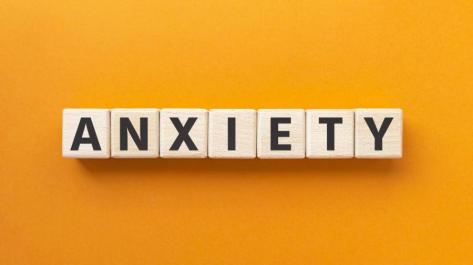Notes from the Parish Nurse - What is GAD?

“Experiencing occasional anxiety is a normal part of life. However, people with anxiety disorders frequently have intense, excessive, and persistent worry and fear about everyday situations.” (www.mayoclinic.org) Normal anxiety might be experienced when giving a speech or during a job interview. It is adaptive, in that it helps us deal with real danger, or perform our best in an activity. “We experience anxiety when we PERCEIVE or THINK that we are in danger. This response is great when there is an actual danger (such as encountering a bear), but becomes a problem when the ‘perceived danger’ is not actually dangerous (giving a talk, seeing a dog).” (www.anxietycanada.com) Anxiety is not dangerous or harmful, but the sensations are there to protect you from danger. It will not last forever; it is temporary.
Anxiety disorders are the most common mental illness in the United States, with over 40 million adults being affected by them. Women are twice as likely as men to experience this illness. There are five major types of anxiety disorders. The most common one is generalized anxiety disorder (GAD) where a person has feelings of nervousness with recurring thoughts of worry and fear. Physical symptom may manifest too. Anxiety attacks or panic attacks, social anxiety, obsessive-compulsive disorder, and post-traumatic stress disorder are the other four. In this article GAD will be discussed.
“As with many mental health conditions, the cause of generalized anxiety disorder likely arises from a complex interaction of biological and environmental factors. They may include genetics, differences in brain chemistry and function, differences in the way threats are perceived, and development and personality.” (www.mayoclinic.org) At this point, it is not fully understood how life experiences can trigger this anxiety disorder. Another cause might be a side effect from a medication.
Twelve common habits might make anxiety worse. They include skipping meals, drinking caffeine, “reaching for sugar”, eating processed foods with additives, having poor eating habits, not exercising, watching the news, ignoring anxiety symptoms, becoming dehydrated, consuming alcohol, lacking enough sleep, and comparing oneself to others.
Symptoms of generalized anxiety disorder signal an “alarm reaction” to the body. (These will be listed, but not discussed in detail.) Individuals experiencing anxiety might experience a few or many of these symptoms.
• Shortness of breath/tight chest
• Rapid heart rate
• Rapid breathing with choking sensation
• Nausea/stomach ache
• Sweating or hot and cold flashes
• Dizzy/light-headed
• Hyperventilation resulting in numbness and tingling of fingers and toes
• Heavy legs
• Bright vision from dilated pupils
Conventional treatment for GAD includes medications and psychological counseling. These treatments would be orchestrated by physicians and therapists. Also, an individual could try complementary techniques that might help alleviate anxiety. These include massage, acupuncture, yoga, aromatherapy, music therapy, art therapy, practicing mindfulness and relaxation techniques. Meditating, walking, calling a friend, journaling, prioritizing sleep, reading, and thinking positive “self-talk” could also be helpful.
As pointed out by another United Methodist parish nurse, we should remember how comforting scripture can be. It is written in the Bible 365 times “Do not be afraid.”
• Hebrews 13:6 “…The Lord is my helper; I will not be afraid.”
• Philippians 4:6-7 “Do not be anxious about anything, but in every situation, by prayer and petition, with thanksgiving, present your requests to God. And the peace of God, which transcends all understanding, will guard your hearts and your minds.
